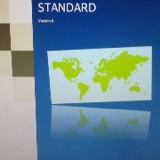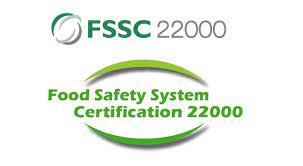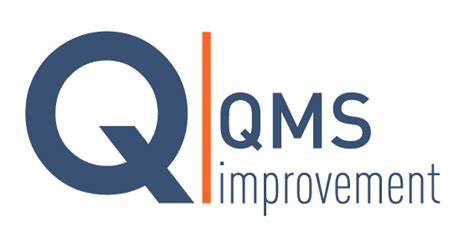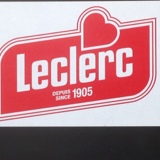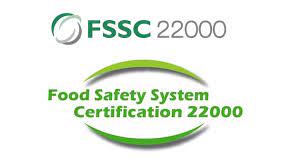Information
-
Document No.
-
Audit Title
-
Client / Site
-
Conducted on
-
Prepared by
-
Location
-
Personnel
16.1 - FOREIGN OBJECT CONTROLS AND RISK ASSESSMENT (BASE)
-
The site must have a documented risk assessment and corresponding effective procedures in place to eliminate (as far as practically possible) all potential foreign object hazards.
-
The risk assessment may include the following, although this is not an exhaustive list:<br>- the process and level of maintenance<br>- glass<br>- plastic<br>- wood<br>- metal (e.g. wire brushes)<br>- paper<br>- string<br>- tape<br>- cardboard<br>- staples<br>- personal items
-
Where any materials identified as a potential foreign object are used in the process or integral to the product (e.g. bag clips, tamper seals, cocktail sticks) they must be suitably controlled to prevent contamination.
-
Product packaging or distribution trays/crates etc., must not be used to store other materials (e.g. nuts, bolts, tools, chemicals).
-
All pens used within storage and production areas must be site issued. Pens must be:<br>- without detachable lid<br>- opaque (i.e. not clear)<br>- of a contrasting colour to the product<br>- metal detectable where the site has a metal detector
16.1.1 - FOREIGN OBJECT CONTROLS AND RISK ASSESSMENT (MEDIUM)
-
Staples, drawing pins and paperclips must not be permitted in production or storage areas , or offices and workshops with direct access to production and storage areas.
16.2 - FOREIGN OBJECT INVESTIGATION (BASE)
-
When a foreign object is identified or detected the source of the material must be fully investigated. Where possible this investigation must be used to instigate corrective and preventative action to reduce the re-occurrence of the contamination.
-
Records of any investigation must be kept.
16.3 - GLASS (BASE)
-
Glass (including windows and equipment) in production and storage areas must be eliminated and replaced with suitable alternatives, where possible. If this is not possible, the glass items must be protected.
-
All lights bulbs must be covered with shatterproof cover/sheath.
-
Where UV light bulbs are used and covers are not possible alternative management or monitoring procedures must be in place.
16.4 - GLASS BREAKAGE (BASE)
-
A detailed procedure must be in place for the management of glass and hard plastic breakages.
-
This must include:<br>- stopping of production operations<br>- restriction of movement through the affected area<br>- quarantine of affected materials<br>- report to management<br>- clean up of breakage and disposal/cleaning of cleaning equipment <br>- safe removal of glass from area<br>- repair or replacement of damaged item<br>- the checking of PPE (including footwear) and changing if necessary<br>- completion of an incident log and sign off that production can restart<br>- a sample of broken glass must be retained in a safe manner<br>- corrective action to prevent re-occurrence<br>
-
Any equipment used to clean up glass breakage must be disposed of afterwards, unless it is only used for glass breakage clean-up.
16.5 - GLASS AND HARD PLASTIC REGISTER (BASE)
-
All glass and hard plastic in storage and production areas must be listed on a register. This includes items of glass and hard plastic included on equipment such as gauges and displays.
-
Every item of glass or hard plastic must be individually identified and listed, and items must not be grouped (e.g. filling machine which has 30 lights must be listed as 'filling machine with 30 lights' and not just 'filling machine.')
16.6 - GLASS AND HARD PLASTIC AUDITS (BASE)
-
Audits must be completed on all registered items at a frequency determined by risk assessment. The audit must record any changes in condition of the registered glass or plastic items.
-
A risk assessment must be completed to determine how quickly repairs must be made.
-
Any issues raised must be investigated to establish if the glass breakage procedures has been followed and whether the product has been put at risk.
-
If product is likely to have been contaminated the incident management procedure must be instigated.
16.7 - USING GLASS AS PACKAGING (BASE)
-
Where glass containers are used as packaging, detailed procedures must exist covering:<br>- intake checks<br>- general handling<br>- breakage on line, particularly in automated filling systems
-
All sites must comply with the requirements as detailed in Customer Requirements for Suppliers like for Tesco 60374 - Handling of breakable containers.
16.8 - WOOD (BASE)
-
The use of wood within the site must be minimised where possible.
-
Controls to minimise the risk from wood can include:<br>- excluding wooden hand tools, pencils, boards, furniture and brooms<br>- layer separation between wooden pallets and product<br>- coverage of materials stored under wooden pallets on racking systems<br>- removal and segregation of broken wooden pallets etc for repair or disposal<br>- identification of where wooden pallets are permitted within the site
-
Wooden pallets, boxes, containers etc must be in a good condition and not pose a contamination risk.
16.8.1 - WOOD (MEDIUM)
-
Sites must try to eliminate all wood in production areas and be able to demonstrate that alternatives have been evaluated and why these options were not suitable.
-
Where wood is used in the process or integral to the product it must be controlled (e.g. skewers, cheese ripening shelves, salami poles, barrels, wood smoke chips).
16.9 - SHARPS (BASE)
-
The site must have sharp metal implement controls in place. These must cover knives, blades, scissors and needles.
-
The controls must include, although this is not an exhaustive list:<br>- only site issue sharps in use<br>- controlled knives, blades and scissors are uniquely identified<br>- no snap blades<br>- knives and blades must only be used for the task for which they were designed <br>- sharps must be accounted for and the condition checked and recorded (at start and end of production minimum)<br>- blade changes must be recorded<br>- knife and blade sharpening must take place away from production areas and equipment must be returned in a clean condition<br>- sharps must not be permitted in personal lockers<br>- in the event of breakage or loss, all parts must be accounted for and the incident logged. Corrective action must be taken to prevent re-occurrence.<br>- in the event of breakage or loss a system must be in place to identify and control potentially contaminated product.
16.9.1 - SHARPS (MEDIUM)
-
Knives and blades must not be stored in personal lockers, knife blocks, plastic scabbards or pockets. These may only be used for temporary storage.
16.10 - TRAY AND CONTAINER CONDITION CONTROL (BASE)
-
All damaged product trays and containers which are unsuitable for further use (including bulk boxes) must be removed from the system and segregated for repair or disposal.
16.11 - FOREIGN OBJECT DETECTION EQUIPMENT RISK ASSESSMENT (BASE)
-
Risk assessment must determine if foreign object detection is required
-
If required, the risk assessment must determine the type of foreign object detection equipment which is required to control the risk (e.g. metal detector, x-Ray, filtration, sieve, magnet etc.)
-
The risk assessment also needs to identify where it should be positioned in the process.
-
In the event foreign object equipment is not required, the risk assessment must document the justification for this.
16.12 - FOREIGN OBJECT DETECTION EQUIPMENT (BASE)
-
Where foreign object detection equipment is used the equipment must be specified as appropriate for the products that are being examined.
-
The operation and sensitivity of the detector in use must be well understood by relevant site personnel.
16.13 - EQUIPMENT REVIEW (ASPIRATIONAL)
-
Equipment must be upgraded to improve detection sensitivity where advances in detection are developed.
16.14 - FOREIGN OBJECT EQUIPMENT USE AND RECORDS (BASE)
-
Where foreign object detection equipment is used the equipment must be fully operational at the start of production for any Customer.
-
An effective testing method must be in place and all checks documented.
-
Testing must be conducted at the start and end of production as a minimum.
16.15 - FOREIGN OBJECT EQUIPMENT MAINTENANCE (BASE)
-
The foreign object detection equipment must be serviced at regular intervals, annually as a minimum, either by the equipment manufacturer, trained contractor or trained site engineer (annually as minimum).
16.16 - FOREIGN OBJECT EQUIPMENT FAILURE (BASE)
-
Where foreign object detection equipment is in use and fails (whether due to failure to detect a test piece or failure to reject product) all material that has Ben checked since the previous satisfactory test must be isolated and retested through a unit that has been confirmed to be working correctly.
16.17 - METAL DETECTION - CUSTOMER (TESCO REQUIREMENT) (BASE)
-
Where metal detection is used the site must comply with the requirements as detailed in their Costumer Requirements for Suppliers like Tesco 60375 - Foreign object detection.
